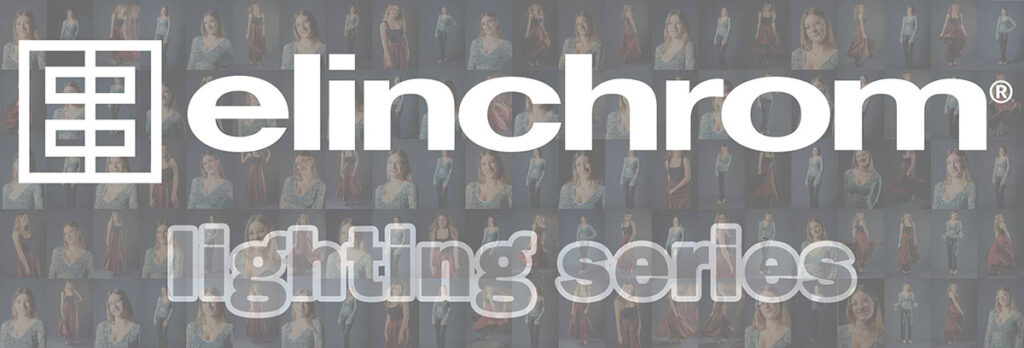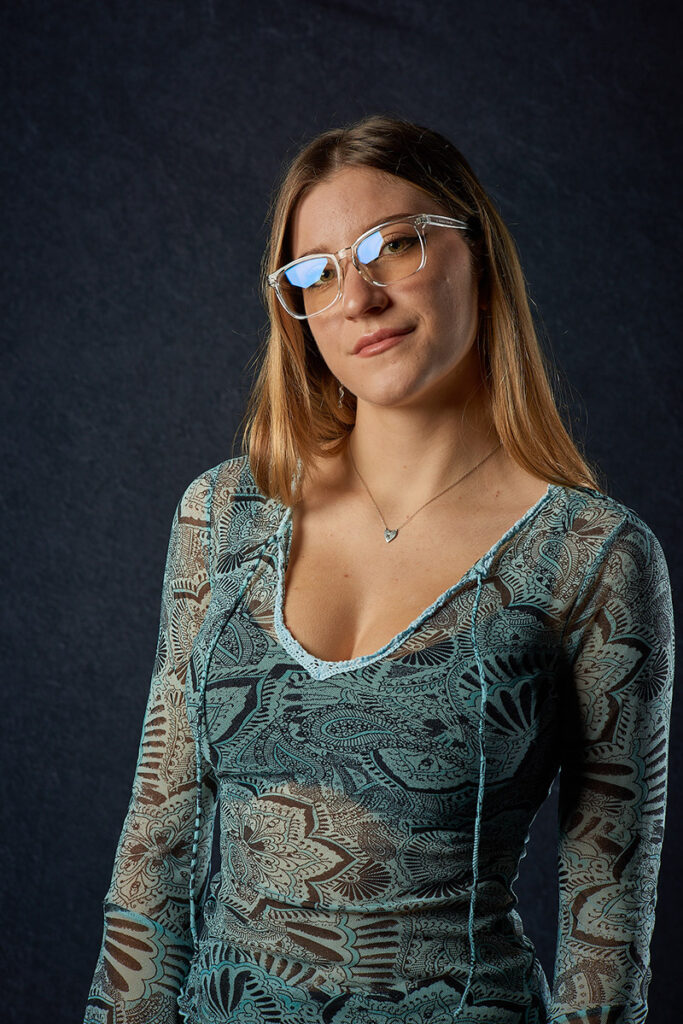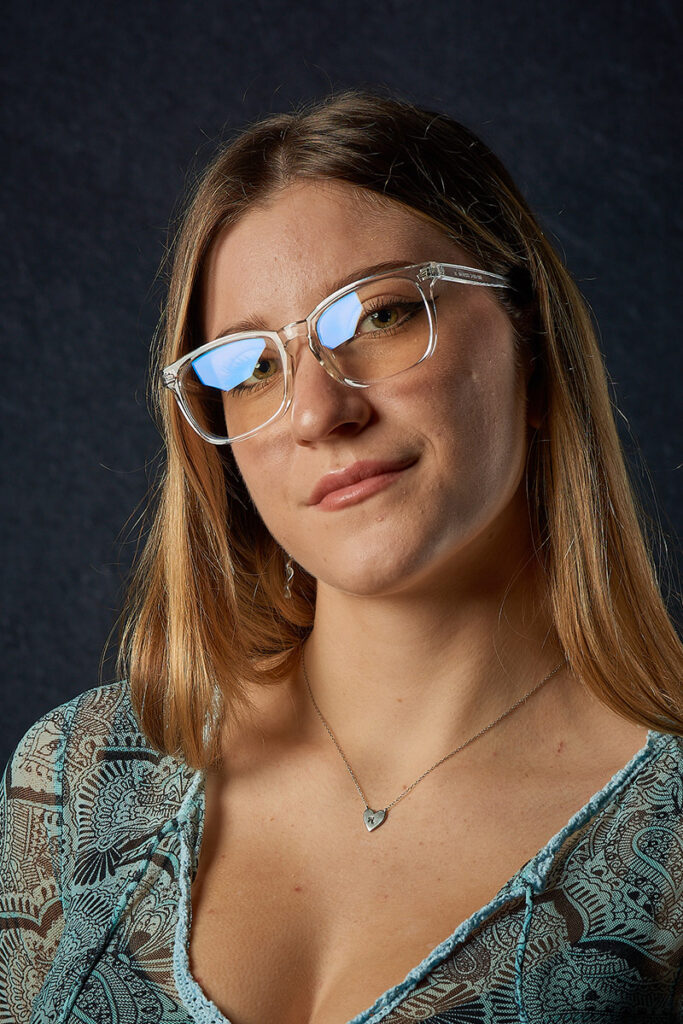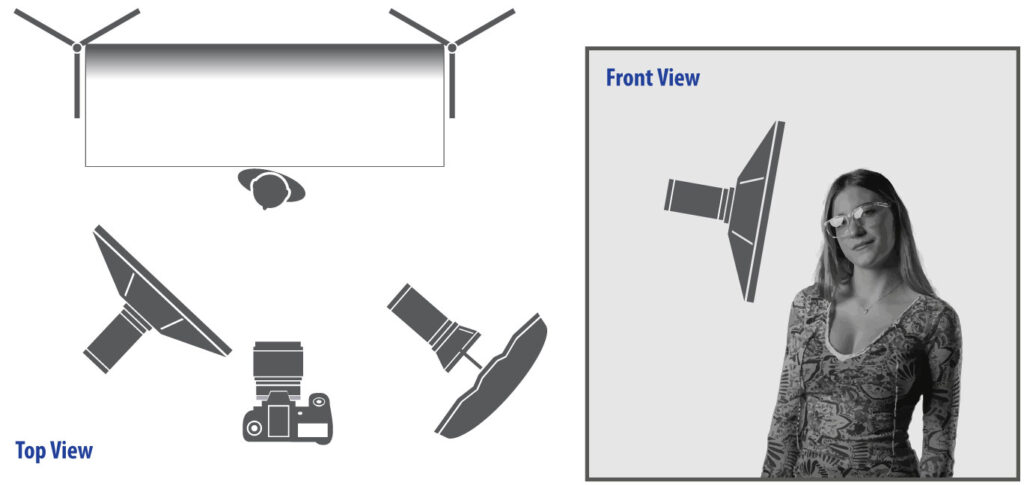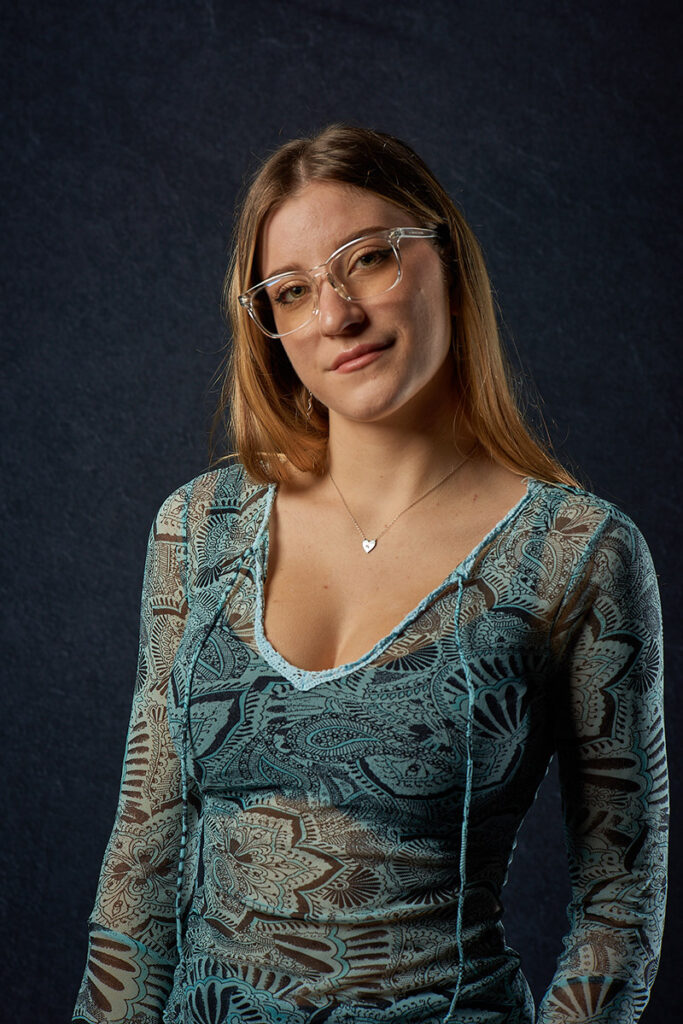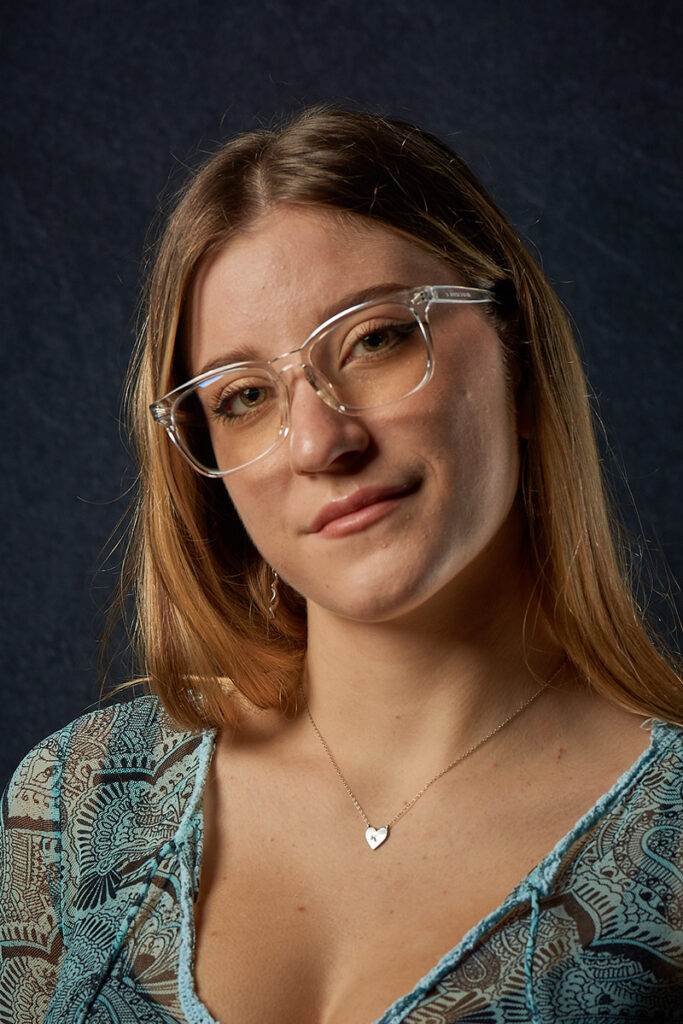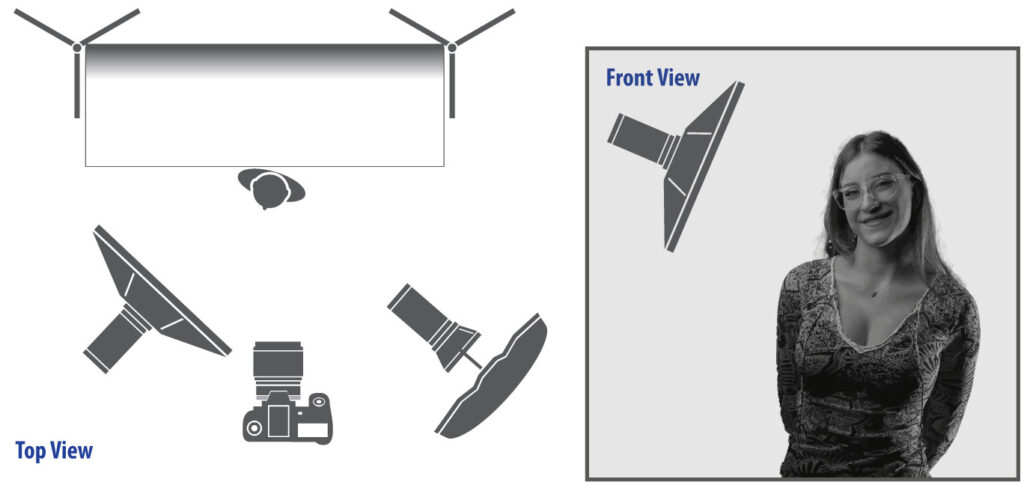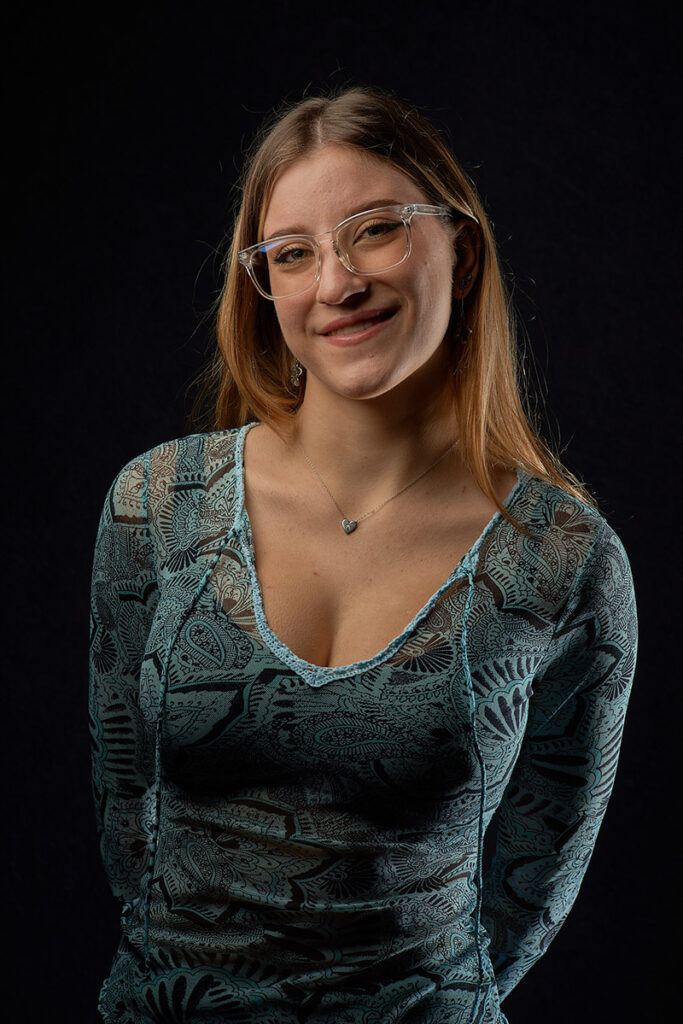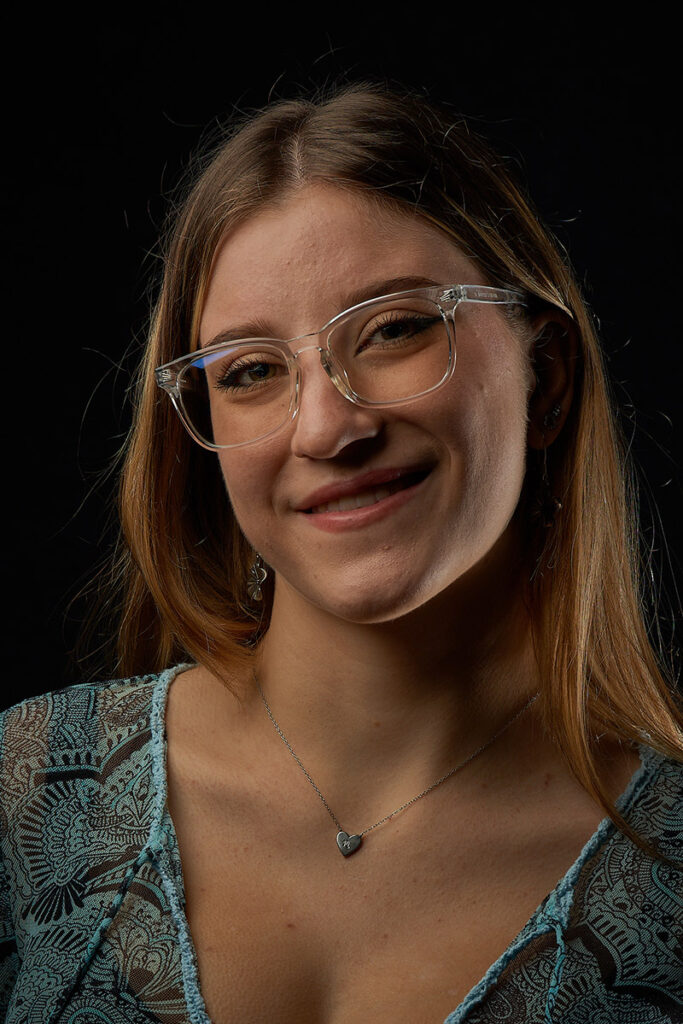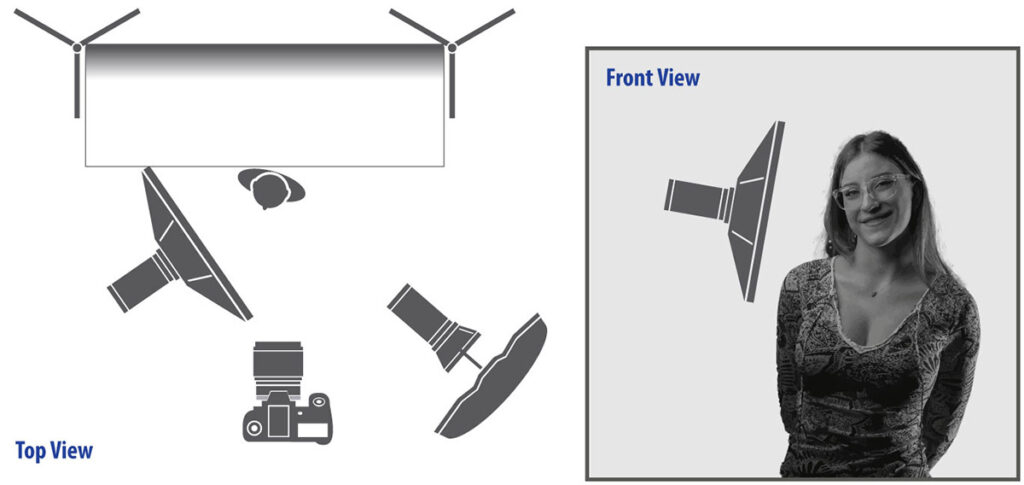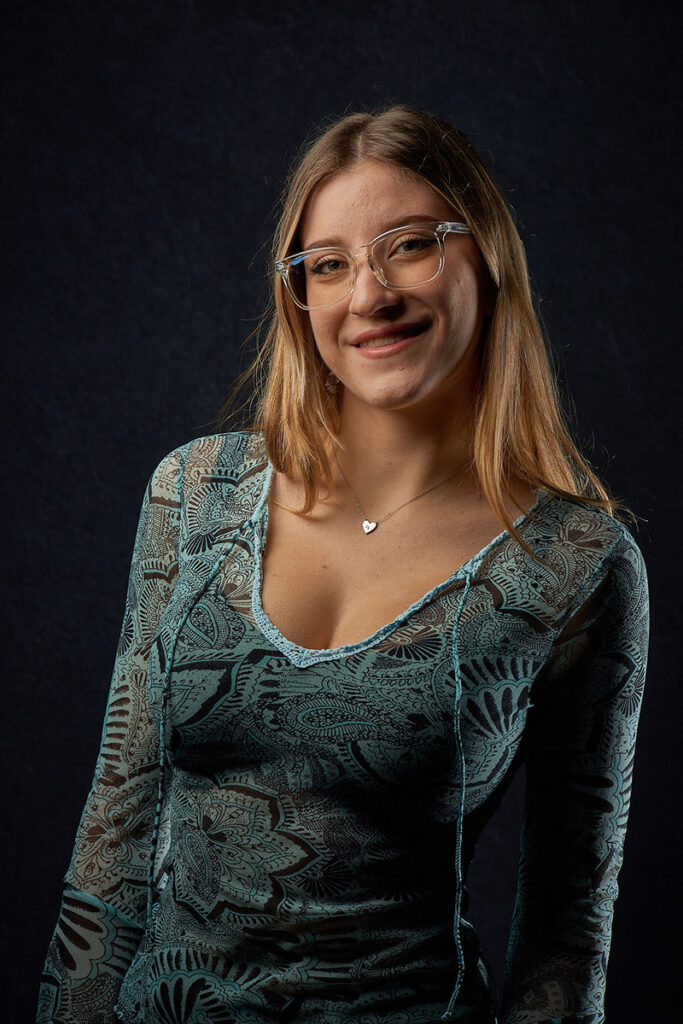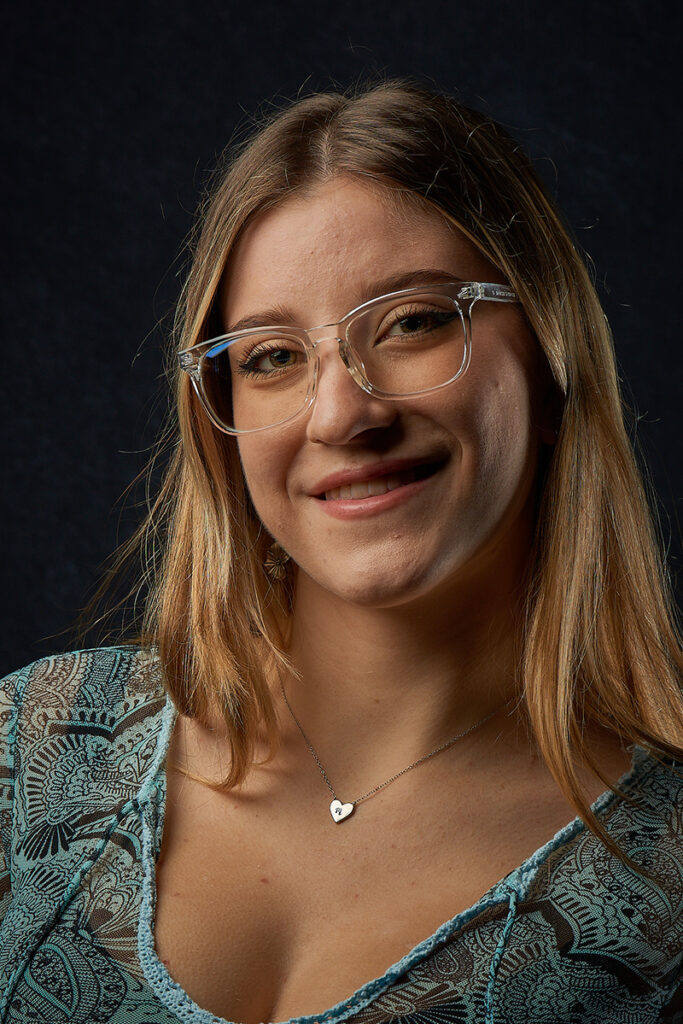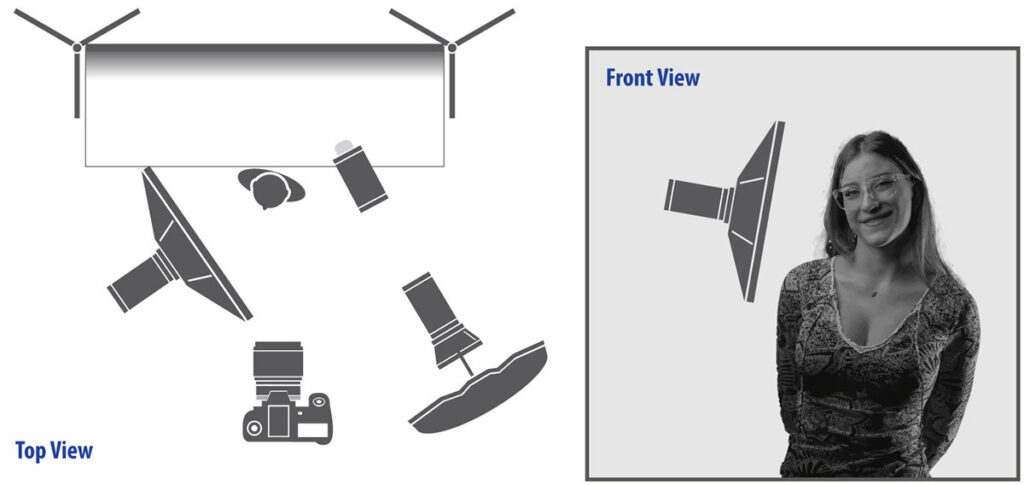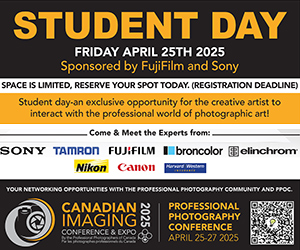Welcome to the seventh installment of our new monthly that highlights a different Elinchrom Light Shaper or Lighting Technique, with sample images (full length and cropped headshots) and lighting diagrams. All the images were photographed with the same model and outfit (standing in the same spot on the background – about 3 feet away), the same day in the same blacked out studio, with the same strobes at the same height (forehead height) & distance (about 5 feet) from the model and the same camera setup. I tried to remove as many obstacles as possible so we can compare light shaper effects.
I used an Elinchrom FIVE battery monolight triggered by the Elinchrom Transmitter Pro. My trusty Gossen Digisky light meter ensured consistent exposure values – it has an integrated Skyport transceiver to remotely trigger the FIVE. My Nikon D810 had a Tamron 85mm f/1.8 lens and all was mounted on a Vanguard VEO 3+ 263CB tripod. Camera settings are ISO64, f/8, 1/125s We used an Easiframe backdrop system with the Grey Texture backdrop. I tethered my camera into Capture One on my laptop with a Tether Pro USB-C to C cable and connected my laptop to a large screen TV with a TetherPro HDMI cable so we could review images on the big screen.
Special thanks to Phil and RevPrint Studio (https://www.revprint.com) for the use of their space. Phil hosts workshops featuring Elinchrom gear via West Toronto Photography Group (https://www.wtpg.ngo/)
This month, I’ll demonstrate how to correct for glass glare. Portrait photographers have to control shine and glare and these tips can also be applied to product photography when shooting shiny objects.
Glass glare is usually very noticeable, as you can see in the below images. But sometimes, if your subject has “anti glare” coatings on their lenses, you might not see the glare until it’s too late. This is why I always shoot tethered – so I can see right away on my large laptop display if I have to deal with any glare. Glare can be an issue on more than just eyeglasses – it can be forehead shine or with bald people, a shine on the top of the head from a hairlight.
I’m using the Deep 70cm Octa, which you can really see in the glare, which is about 5 feet away. For all of you “Fix it in Photoshop” types, good luck. This is not the type of thing you can easily “fix” in Photoshop. I also have a 70cm umbrella for fill.
Glass glare happens because the path of the light is too close to the plane of the lens.
We have to change that path of light and there are a couple of ways to do this.
The first thing I do is turn on my model lights so I can see the glare. Then I raise my light. In this instance, this removed all but a sliver of glare from the one lens. If you’re in a rush, this is the quickest and most effective way to remove glass glare. You can also have your subject drop their chin a bit.
Here’s the lighting diagram:
If I’m being picky, there are two things I want to change in regards to this technique: there’s an odd shadow across Maya’s cheek that wasn’t there in the first image and the specular highlights and reflections are quite sharp.
To correct for these, I’m going to bring my main light closer, effectively making my light source much larger, lower it and angle it a bit more to keep it out of the frame.
Here’s the lighting diagram:
I’ve reduced the power output of my key light because I brought it closer, which now means there is no fall-off onto the background. Therefore, the background appears much darker. There is an added bonus of less shine on Maya’s skin. If I look at the specular highlights, they are considerably softer – look at the frame of the glasses and the sliver of glass glare. That’s now much easier to “fix in Photoshop”.
My final changes to my lights, to get more of the look I’m after with minimal glare, is to bump the power of my key light 1/3 stop for a touch more contrast whilst keeping the soft highlights, adding a background light (Elinchrom THREE with its diffusion dome) and swinging the fill light with umbrella more towards the background.
Here’s the lighting diagram:
The resulting portrait is nicely lit – a good balance of contrast, shine and sculpting of the shadows to define Maya. The background has enough light that I have separation of Maya from the background and the fill is more subtle. I also like how her heart charm, with the monogram “M” (it’s for Maya, but her mom says it’s for “Mom”) is much easier to read.
To summarize, to correct glare, you have to change the plane of the light in reference to your camera. You can move the angle of your light and decide if you’re happy with that. You can also make your light softer and larger by bringing it closer and reducing the power, which also reduces shine.
Share some of your favourite images where you corrected glare on our Facebook page or tag us on Instagram #photonewscanada #elinchromlightshaper.
Next month, I’ll show some simple two-light setups and the results. See you next month!
Read the previous articles:
Elinchrom Light Shapers and Lighting Techniques – #Episode 1
Elinchrom Light Shapers and Lighting Techniques – #Episode 2
Elinchrom Light Shapers and Lighting Techniques – #Episode 3
Elinchrom Light Shapers and Lighting Techniques – #Episode 4
Elinchrom Light Shapers and Lighting Techniques – #Episode 5
Elinchrom Light Shapers and Lighting Techniques – #Episode 6
Elinchrom Light Shapers and Lighting Techniques – #Episode 7
Elinchrom Light Shapers and Lighting Techniques – #Episode 8
Items Discussed
Author: Will Prentice
A portrait, fine art and commercial photographer for 30 plus years, Will Prentice is not just a contributor to PHOTONews magazine, but also host of PHOTONewsTV, owner of Captura Photography+Imaging and Technical Support/Brand Manager for Amplis Foto, Canada’s largest distributor of photographic equipment.
Will teaches photographers of all skill levels how to improve their craft – from creative photo projects to picking the right gear for their needs to flattering lighting to getting the best expressions to creating final images for screen and print. His unique style of highly detailed images with perfect tonality, wide dynamic range and stunning colour is instantly recognizable. Commercial clients rely on Will’s creative eye and mastery of lighting.
When he’s not behind the camera or in front of a class, you’ll find Will outdoors in any weather – usually on one of his bikes or enjoying time with his grandchildren.



